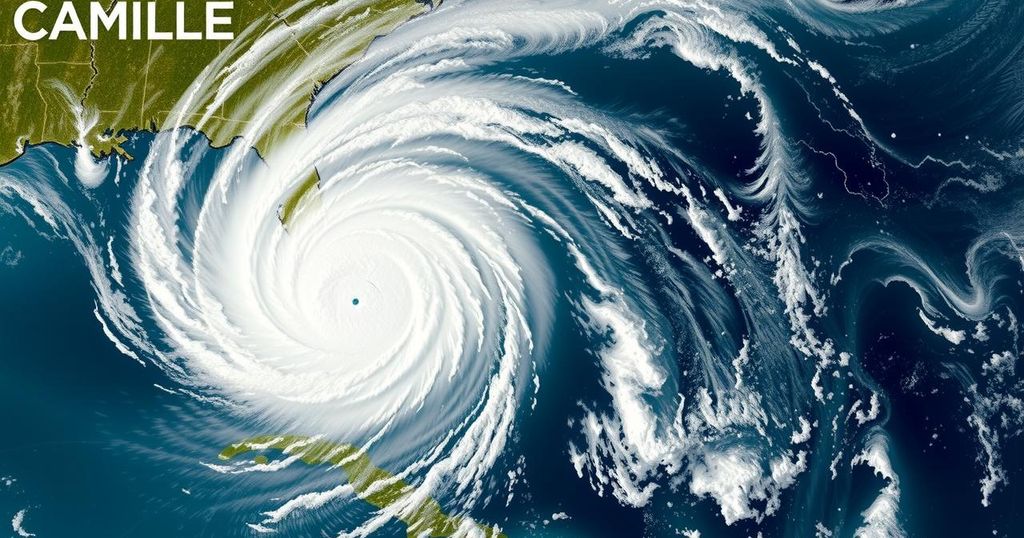Weather
World news
AFRICA, APPALACHIA, ATLANTIC OCEAN, BAY SAINT LOUIS, BRIT, CAYMAN ISLANDS, CUBA, GULF COAST, GULF OF MEXICO, HURRICANE, HURRICANE SEASON, MISSISSIPPI, MISSISSIPPI RIVER, NATURAL DISASTER, NATURAL DISASTERS, NORTH AMERICA, OHIO VALLEY, POWER OUTAGES, SOUTH AFRICA, UNITED STATES, VIRGINIA, WEST VIRGINIA
Jamal Robinson
0 Comments
Hurricane Camille: A Category 5 Disaster in August 1969
Hurricane Camille was a Category 5 hurricane that struck the Gulf Coast in August 1969, causing significant damage and loss of life. Originating as a tropical storm, it rapidly intensified before making landfall in Mississippi. The resulting floods and landslides led to over 250 fatalities and considerable economic losses, highlighting the hurricane’s catastrophic impact across the southeastern United States.
Hurricane Camille, which occurred in August 1969, is regarded as one of the most powerful hurricanes of the 20th century. Originating as a tropical storm on August 14, west of the Cayman Islands, Camille intensified over the Gulf of Mexico and reached Category 5 strength by August 16, the highest classification on the Saffir-Simpson scale. The hurricane made landfall on the night of August 17 at Bay Saint Louis, Mississippi, with wind gusts estimated to exceed 200 miles per hour. This resulted in catastrophic conditions, including storm surges that produced tides exceeding 24 feet. As Camille moved inland towards the Ohio Valley and Virginia, it transitioned to a tropical depression but caused extensive flooding, with rainfall amounts ranging from 12 to 20 inches in impacted areas.
Prior to its landfall, the projected path of Hurricane Camille prompted the evacuation of more than 150,000 residents. While most evacuated successfully, the storm ultimately claimed the lives of over 250 individuals and caused substantial economic damage. The repercussions of Camille extended beyond physical destruction to the economic strains associated with relief efforts in the aftermath of this disaster. The severity of the storm remains a significant event in the history of hurricane activity along the Gulf Coast.
Hurricane Camille is a pivotal case study in the history of tropical cyclones affecting the United States, particularly given its classification as a major hurricane on the Saffir-Simpson scale. Its impact on coastal and inland regions elucidates the dangers posed by such powerful storms, illuminating the challenges of emergency preparedness and response to natural disasters. Studies on Camille contribute to understanding hurricane behavior, strengthening prediction models, and enhancing community resilience against similar future events.
In conclusion, Hurricane Camille stands out in meteorological history due to its intensity and the widespread devastation it caused. The storm’s rapid escalation from a tropical storm to a Category 5 hurricane serves as a reminder of the unpredictable nature of such weather phenomena. Furthermore, the significant loss of life and infrastructure damage emphasizes the necessity for improved evacuation protocols and disaster preparedness to safeguard lives and property in vulnerable regions.
Original Source: www.britannica.com




Post Comment